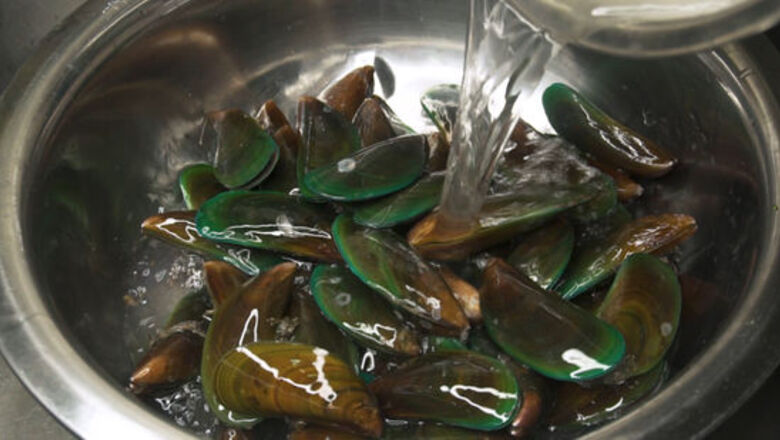
views
Cleaning and Debearding Mussels
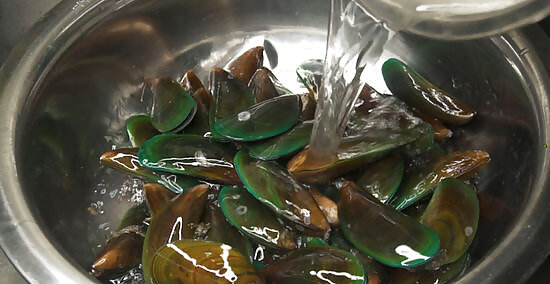
Soak the mussels in a saltwater bath for 15 to 20 minutes. In a large bowl, mix ¼ cup (68 g) of kosher salt with about 3 cups (710 mL) of cold water (or however much water you need to cover the mussels). Whisk the mixture, add the mussels, and let them soak for 15 to 20 minutes. Mussels “breathe” while they soak to expel dirt, salt, and other debris inside their shells. This helps purify them, which gives you a better eating experience. Alternatively, soak the mussels in plain water. Saltwater helps preserve mussels, but they’re unlikely to die in fresh water when soaked for a short time. Most mussels are farm-raised and are often cleaned before you buy them. However, it doesn’t hurt to soak them to remove any remaining debris. Wild mussels are typically dirtier than farm-raised mussels, so soaking them is highly recommended.
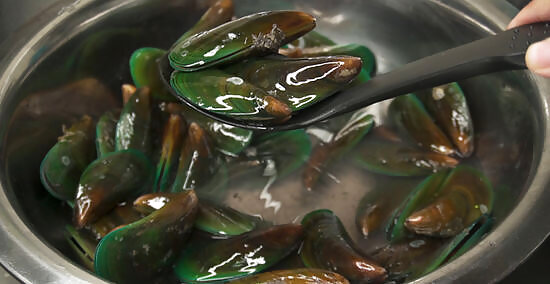
Use a slotted spoon to move the mussels from the water to a colander. Remove the mussels from the saltwater bath with a slotted spoon and place them in a colander in your sink. When all of the mussels are removed, drain the salt water and clean the bowl. Don’t dump the water and mussels into the colander, as all the dirt and sand that the mussels expelled will end up back on top of the mussels.

Remove the beard from each mussel by pulling it toward the hinge. Pick up each mussel and look for string-like fibers coming out of the shell—this is the mussel’s beard, or byssal threads. Simply grab the beard between your forefinger and thumb. Then, pull it toward the hinge end of the mussel to remove it. If you have trouble removing the beard with your fingers, grip it with a dry paper towel or scrape it off with a knife. If you can’t get the entire beard off, that’s okay. The beard is edible and won’t hurt you if it gets cooked in with your meal. Don’t pull the beard toward the end of the mussel that opens, as this can damage and potentially kill the mussel.
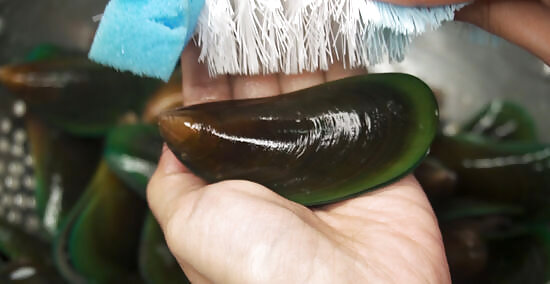
Scrub and rinse the mussels under cold water. Turn on your faucet to cold water. Then, pick up each mussel and scrub it with a scrub brush or wire brush under the running water. This removes any sand, mud, barnacles, and other stuck-on debris. Thoroughly scrub the shells so they’re smooth to the touch. If you feel any bumps or rough spots, scrub that area a little harder. If you’re dealing with stubborn barnacles or other stuck-on debris, carefully scrape them off with a knife. It typically only takes a few minutes to clean an entire batch of mussels.
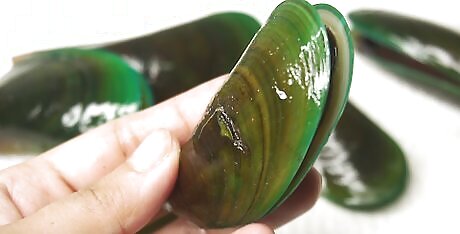
Discard any dead, damaged, or spoiled mussels. Make sure all of your mussels are closed and have a mild salty smell. If any mussels are open, tap them against your counter or squeeze them with your fingers. If they don’t close, throw them away. Discard any mussels that are cracked, chipped, or smell rotten, too. Mussels that don’t close their shells are either dead or dying, and unsafe to eat. If you’re not sure whether a mussel is dead or not, it’s best to err on the side of caution and throw it out. Eating spoiled mussels can cause food poisoning or other food-borne illnesses.
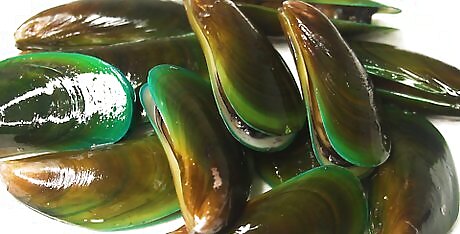
Set the mussels on towels to dry before you cook them. Transfer the clean and alive mussels from the colander to a kitchen towel or paper towel to dry. Then, pat them with another clean towel. Now you’re ready to cook and eat your mussels! Clean your mussels right before you cook them. Cleaning them and then storing them can cause the mussels to die.
Selecting and Storing Mussels
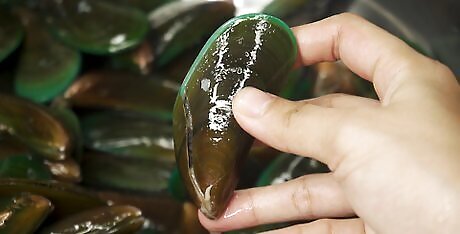
Buy mussels that are kept cold, stay closed, and smell salty. When you’re shopping for mussels at your store or local seafood market, make sure they’re stored on ice or kept refrigerated. Then, inspect the shells to see if they’re moist and tightly closed. If the shells are dry, stay open when tapped, or smell rotten, the mussels are likely dead, so don’t buy them. Mussels are sold and cooked live to ensure you don’t eat dead mussels, as dead mussels are unsafe to eat. Tap or squeeze any mussels that are open to see if they close, which means they’re alive and safe to eat. It’s normal for a few mussels to be dead or dying in a bunch. However, if the mussels were stored improperly or the majority look bad, don’t buy them. Note: Only purchase mussels from reputable sources that get mussels from certified farming and harvesting waters. Reputable sellers have a shipper’s tag or shipper number.
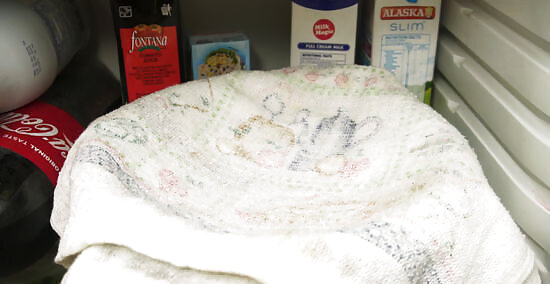
Store fresh mussels in the fridge immediately after purchasing them. When you get home, remove the mussels from their bag or container and pour them into a bowl. Then, place a damp cloth or paper towel on top of the mussels and set it in your fridge. This allows the mussels to breathe and keeps them moist and fresh. Optionally, place a sealed bag of ice on top of the mussels and underneath the damp towel to ensure the mussels stay chilled and fresh. Drain the bowl of water daily. Mussels release water when they’re stored, so this prevents them from sitting in the water and spoiling. Make sure your fridge stays between 32 to 40° F (0-4° C). Do not store the mussels in a closed bag, container, or in water, as this can kill them and make them unsafe to eat.
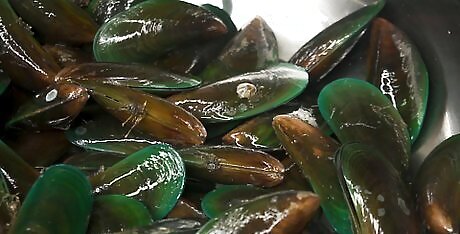
Cook the mussels within 1 to 2 days of buying them. If you don’t plan on cooking your mussels immediately, eat them within 1 to 2 days of purchasing them for the best flavor and texture. Mussels can stay fresh in the fridge for up to 4 days. After 4 days, toss your mussels. They are likely dead or dying, which makes them unsafe to eat. Alternatively, freeze mussels to extend their shelf life. Clean them, place them in a freezer-safe plastic bag, and store them in the freezer for 3 months.
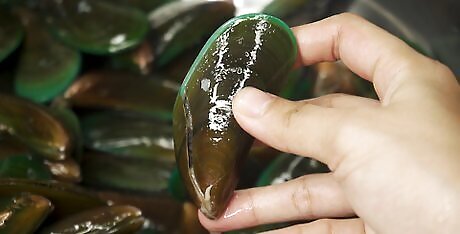
Discard open, cracked, or smelly mussels, as they can make you ill. Examine each mussel individually. Throw away any that have large cracks, chips, or other damage. Then, toss any mussels that don’t close when you tap them on the counter or squeeze them. If any of the mussels smell spoiled or rotten, throw them away, too. Open, smelly, or damaged mussels are all signs that they are dying or dead. Dead and dying mussels aren’t safe to eat. If the mussel closes when you tap or squeeze it, that means the mussel is still alive and is safe to eat. Some mussels that are stressed, but not dead, will open slightly. Give them a quick tap or squeeze to see if they close before throwing them out.

















Comments
0 comment